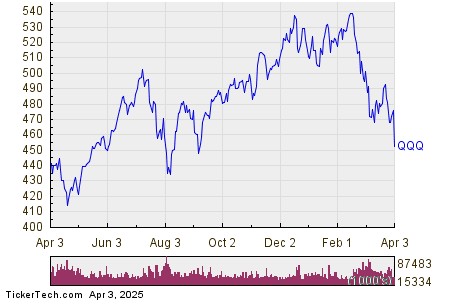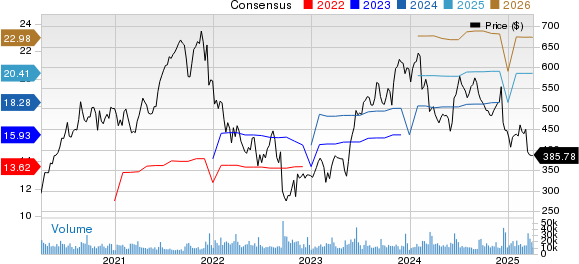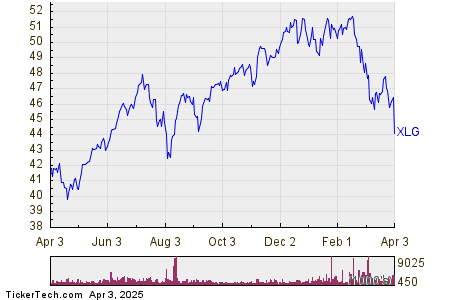Mixed Sugar Prices Amid Production Adjustments and Market Forces
As of today, May NY world sugar #11 (SBK25) is down -0.03 (-0.16%), while May London ICE white sugar #5 (SWK25) has risen by +2.60 (+0.49%). The sugar market is showing mixed results, with NY sugar reaching a 2-1/2 week low. The decline is primarily attributed to a report by Meteorologist Climatempo, which indicated above-average rainfall in Brazil over the past week, benefiting the sugar crop.
However, sugar prices did recover most of their earlier losses today. The increase in London sugar prices can be linked to a rise in crude oil prices (CLK25), which reached a 5-week high and triggered short-covering in sugar futures. Higher crude prices enhance ethanol prices, potentially leading sugar mills to focus more on ethanol production and less on sugar, ultimately slowing down sugar supplies.
Several factors are currently supporting sugar prices, particularly signs of reduced global sugar production. On March 12, the Indian Sugar and Bio-energy Manufacturers Association revised its 2024/25 sugar production forecast for India down to 26.4 million metric tons (MMT) from its January estimate of 27.27 MMT, attributing this reduction to lower cane yields. Additionally, Unica reported last Thursday that Brazil’s cumulative sugar output from the Center-South for the 2024/25 season through mid-March has decreased by 5.3% year-over-year, totaling 39.983 MMT. Furthermore, sugar trader Czarnikow adjusted its Brazil 2025/26 sugar production estimate downward to 42 MMT from a previous forecast of 43.6 MMT made in February.
From a broader perspective, the International Sugar Organization (ISO) increased its forecast for the global sugar deficit in 2024/25 to -4.88 MMT, up from a prior estimate of -2.51 MMT in November. This signals a market tightening as we transition from the 2023/24 global sugar surplus of 1.31 MMT. Moreover, the ISO reduced its projection for global sugar production in 2024/25 to 175.5 MMT, down from 179.1 MMT in November.
Conversely, some bearish sentiments persist in the market. On March 12, consultant Datagro projected an increase in Brazil’s Center-South sugar production for the 2025/26 season by +6% year-over-year to 42.4 MMT. Additionally, Green Pool Commodity Specialists reported on February 5 that they expect a shift to a global sugar market surplus of +2.7 MMT in the 2025/26 crop year, reversing their prior estimation of a -3.7 MMT deficit for the 2024/25 season.
On January 20, the Indian government stated it would permit sugar mills to export 1 MMT of sugar this season, easing restrictions imposed in 2023. Previously, India limited sugar exports since October 2023 to maintain domestic supply levels. In the 2022/23 season, exports were capped at 6.1 MMT following a record-high allowance of 11.1 MMT the previous season. Despite this, the India Sugar Mills Association (ISMA) projects a -17.5% year-over-year decrease in India’s 2024/25 sugar production, reaching a 5-year low of 26.4 MMT.
The outlook for Thailand presents another bearish factor, with projected sugar production for 2024/25 expected to increase by +18% year-over-year to 10.35 MMT, up from 8.77 MMT in the 2023/24 season. Thailand, being the third-largest sugar producer and the second-largest exporter worldwide, could pressure global prices further.
In Brazil, drought and excessive heat from the previous year caused fires that impacted sugar crops, particularly in the key growing state of Sao Paulo. Green Pool Commodity Specialists reported that around 5 MMT of sugar cane may have been lost due to these fires. Consequently, Brazil’s government crop forecasting agency, Conab, adjusted its estimate for 2024/25 sugar production down to 44 MMT from 46 MMT, highlighting lower yields from the ongoing drought and heat.
Lastly, the USDA’s bi-annual report released on November 21 projected a +1.5% year-over-year increase in global sugar production for 2024/25, reaching a record 186.619 MMT. It also forecasts that human sugar consumption will climb by +1.2% year-over-year to a record 179.63 MMT, while global ending stocks are expected to decline by -6.1% to 45.427 MMT.
On the date of publication,
Rich Asplund
did not have (either directly or indirectly) positions in any of the securities mentioned in this article. All information and data in this article is solely for informational purposes. For more information, please view the Barchart Disclosure Policy.
here.
The views and opinions expressed herein are the views and opinions of the author and do not necessarily reflect those of Nasdaq, Inc.



